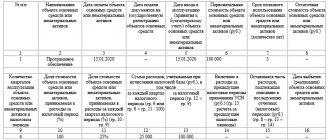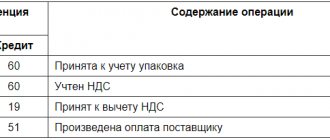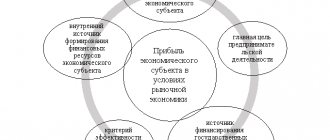Exclusive and non-exclusive rights
Computer programs are subject to copyright (Clause 1, Article 1259 of the Civil Code of the Russian Federation). Therefore, the procedure for reflecting the costs of creating a website in accounting depends on what rights the organization owns to it - exclusive or non-exclusive.
If an organization has exclusive rights to a website, developers do not have the right to create the same website for other persons. That is, the site is unique, and the organization becomes its sole owner.
If the organization has non-exclusive rights to the site, developers can create a similar site for other persons (clause 1 of Article 1297 and subclause 1 of clause 1 of Article 1236 of the Civil Code of the Russian Federation).
If the site is created on its own, then the exclusive rights to it may belong to the organization in the following cases:
- if the employment or other agreement with the employee involved in the development of the site does not provide for the retention of all exclusive rights to the site (Article 1261, paragraph 2 of Article 1295 of the Civil Code of the Russian Federation);
- if the author's order agreement with a third-party specialist does not stipulate that the exclusive rights to the site belong to the contractor (clauses 1 and 3 of Article 1296 of the Civil Code of the Russian Federation);
- if the contract or R&D agreement, which does not directly imply the creation of a website, stipulates that exclusive rights to the website belong to the customer organization (Clause 1 of Article 1297 of the Civil Code of the Russian Federation).
Inclusion in the NMA
If all exclusive rights to the site belong to the organization (and not the developers), then it can be taken into account as part of intangible assets. In this case, other conditions listed in paragraph 3 of PBU 14/2007 must be observed. Namely:
- exclusive rights to the site are confirmed by documents (for example, an agreement with an employee involved in the development of the site; an official assignment for the creation of a site; an author's order agreement with a third-party specialist; an act of acceptance and transfer of the exclusive right, etc.);
- the organization does not plan to transfer (sell) exclusive rights to the site in the next 12 months;
- the site is used in the production of products (works, services) or for management needs;
- using the site may bring economic benefits (income);
- the period of use of the site exceeds 12 months;
- the initial cost of the site can be determined.
There are no cost restrictions for including a website among intangible assets in accounting. It is also not necessary to register exclusive rights to a website with Rospatent (Article 1262 of the Civil Code of the Russian Federation).
Tax accounting for support services and modernization of Internet sites
First of all, the peculiarities of tax accounting for transactions related to the purchase of support services or modernization of Internet sites are a consequence of the specific legal nature of the latter.
Internet sites are among the objects of intellectual property rights and represent a combination of a number of elements, in particular, such as: software component, web design, databases, content.
The development of an Internet site can be carried out either by the taxpayer itself or with the involvement of specialized developers. In practice, based on the results of development, the rights to the website are transferred from the developer to the customer company. Accordingly, the latter acquires an object of intellectual property rights that corresponds to the definition of an intangible asset established by subclause 14.1.120 of the Tax Code of Ukraine.
Accounting for intangible assets is carried out in accordance with Accounting Regulation (Standard) 8 “Intangible Assets”, approved by Order of the Ministry of Finance of Ukraine dated October 18, 1999 No. 242 (hereinafter referred to as “P(S)BU No. 8”). The rules for their accounting are to some extent similar to the rules for accounting for fixed assets. Intangible assets are also subject to amortization over their useful life and are shown in accounting at historical cost, which, among other things, consists of the costs of their creation or acquisition.
As already mentioned, during the operation of Internet sites there is often a need to purchase services to support or modernize them. Thus, the modernization of an Internet site consists of improving it, finalizing it, optimizing it, reconstructing it, changing its design and functional modules, including translating its interface into a foreign language.
Supporting an Internet site, in turn, may consist of updating its content (information content) or testing, checking the correct settings and functioning, correcting errors, adjusting parameters or supporting its performance in other ways.
For the purpose of calculating corporate income tax, the tax consequences of purchasing support services and modernizing Internet sites are not regulated by the norms of the Tax Code of Ukraine. At the same time, the rules for accounting for such transactions are established by the norms of P(S)BU No. 8, on the basis of which the tax consequences of the acquisition of these services are determined.
According to paragraph 18 of P(C)BU No. 8, the initial cost of intangible assets increases by the amount of expenses associated with improving such intangible assets, increasing their capabilities and useful life, which helps to increase the initially expected future economic benefits from their use.
At the same time, the second paragraph of this paragraph states that expenses incurred to maintain the object in a usable condition and obtain an initially determined amount of future economic benefits from its use are included in the expenses of the reporting period.
In other words, the norm of paragraph 18 of P(S)BU No. 8 distinguishes the tax consequences of support services and modernization of an Internet site, based on their nature and purpose of acquisition.
Thus, since the main purpose of modernizing an Internet site is to improve it, expenses associated with the acquisition of such services are subject to capitalization, which implies the inclusion of expenses in the initial cost of the Internet site as an intangible asset and its increase.
The purpose of maintaining an Internet site, on the contrary, is to ensure its normal functioning without any improvement in functional characteristics, and therefore the costs of purchasing such services are recognized as expenses during the period of their occurrence.
Thus, the tax consequences of purchasing support services and upgrading an Internet site for the purposes of calculating corporate income tax differ due to the difference in their nature and the purpose of the acquisition.
Regarding the tax consequences of these services in terms of value added tax
(hereinafter referred to as VAT), it should be noted that according to the norms of section XX of the Tax Code of Ukraine, the supply of software products (including a website) is exempt from VAT. That is, the supply of services for the development or modernization of an Internet site, provided that the rights to the result of development or modernization are transferred to the taxpayer, does not lead to tax consequences for VAT.
At the same time, the purchase of website support services does not involve the transfer of any rights to software products, and therefore operations for the supply of these services are subject to VAT taxation in accordance with clause 185.1 of the Tax Code of Ukraine.
Difference of approaches
The fiscal policy of tax authorities regarding support services and modernization of Internet sites often comes down to:
1. Denial of the reality of support services and modernization of Internet sites.
2. Attempts to manipulate the tax consequences of support services in order to impose on taxpayers the need to capitalize the costs of such services.
The natural consequence of these claims and manipulations is the deprivation of taxpayers’ right to recognize expenses and tax credits generated as a result of the purchase of such services.
Claims to the reality of support services and modernization of Internet sites, first of all, are a consequence of the comparative difficulty of proving their reality due to the following factors:
– lack of an established “standard” for proving their reality;
– insufficient documentation;
– difficulty in identifying their results.
The tax authorities' arguments about the lack of real provision of these services come down to arguments about : the defectiveness of the counterparty - the service provider, the inability to establish the volume and content of purchased services, the inability to establish a real change in the composition of the enterprise's assets as a result of the acquisition of such (since it is difficult to identify the presence of the result of the purchased services), the absence business purpose in their acquisition, as well as the connection of these services with the economic activities of the taxpayer.
In the event of a dispute with the tax authority, proving the reality of support services and modernization of the website consists of refuting the above arguments of the tax authorities. This is often achieved through:
1. Documentary confirmation of compliance with all stages of provision of disputed services.
The stages of modernizing Internet sites are usually
: coordination of goals and scope of modernization; providing the contractor with initial data, access keys, and updated design layouts; direct development and integration of changes into the website; transfer of rights to objects created as a result of its modernization.
Website support usually consists of the following steps
: testing the website for errors, directly correcting errors, adjusting functional parameters, checking the stability of the website after correcting errors. In case of updating its content: transfer of current content for posting on the website, adaptation and placement (integration) of such content.
2. Documentary evidence of the use of the website in business activities.
3. Reasoned justification for the economic feasibility of purchasing services.
It should be noted that in the edition of the Tax Code of Ukraine, in force since 01/01/2015, there is no such condition for recognizing expenses for the purposes of calculating corporate income tax as the connection of goods, works, services purchased by the taxpayer with his economic activity.
At the moment, it is impossible to reliably predict through what prism these changes will be perceived by tax and judicial authorities, since audits of taxpayers for the period 2015 are just beginning to be carried out. We can assume that this principle will also be applied, but as an element of the doctrine of the reality of business transactions.
These legislative changes did not affect the requirements for recognition of the right to form a VAT tax credit due to the purchase of support services for Internet sites, which means that the algorithm for proving the legality of its formation remained the same.
Attempts to impose on taxpayers the need to capitalize expenses for the purchase of services and support of Internet sites are carried out somewhat less frequently by tax authorities. Such attempts are justified using a distorted interpretation of the purpose of purchasing such services.
Tax authorities often interpret the purpose of purchasing these services as:
– bringing the website to a state suitable for its use;
– modernization of the website, that is, an increase in the initially expected future economic benefits from its use.
In the first case, the tax authorities assert the need to capitalize all expenses for maintaining an Internet site, guided by paragraph 11 of P(S)BU No. 8. According to this norm, the initial cost of an acquired intangible asset (Internet site) consists of the price (cost) of the acquisition (except trade discounts received), duties, indirect taxes that are not refundable, and other expenses directly related to its acquisition and bringing it to a state suitable for its intended use.
The position of the tax authorities in this case boils down to the conclusion that the website support services purchased by the taxpayer are aimed at bringing it to a state in which it is suitable for its intended use.
The error of this position lies in the interpretation of the norm of paragraph 11 of P(S)BU No. 8 in isolation from its systemic connection with the following norms.
The procedure for reflecting intangible assets (including Internet sites) in the accounting of enterprises is regulated, in particular, by the order of the Ministry of Finance of Ukraine “On approval of standard forms of primary accounting of objects of intellectual property rights as part of intangible assets” dated November 22, 2004 No. 732 (hereinafter referred to as Order No. 732).
In accordance with the norms of this order, an Internet site as an intangible asset is reflected in the taxpayer’s accounting by introducing such an Internet site into economic circulation in accordance with standard form No. NA-1 “Act of introducing into economic circulation an object of intellectual property rights as part of intangible assets .
In turn, paragraph 10 of P(S)BU No. 8 determines that acquired (created) intangible assets are credited to the enterprise’s balance sheet based on their original cost.
That is, the norm of paragraph 11 of P(S)BU No. 8 regulates exclusively the list of expenses that are included in the initial cost of an Internet site before the start of its use, since the initial cost of an Internet site is determined as of the moment of its introduction into economic circulation and can only increase in case of its modernization.
In other words, it is possible to bring to a state suitable for use only an Internet site that is still at the development stage, that is, has not been put into economic circulation in accordance with the rules of Procedure No. 732.
Accordingly, if a dispute arises with the tax authority, the first thing to prove is the fact that the website was in operation during the period of provision of the disputed support services. This automatically deprives the tax authority of the right to carry out any additional assessments based on a distorted interpretation of the norm in paragraph 11 of P(S)BU No. 8.
If the website was not put into economic circulation at the time of purchasing support services, it will be extremely difficult to prove the illegality of additional charges, since the types of services inherent in support (testing, error correction, filling with content) are often part of the process of its development.
Summarizing the above, we can assert that the key interest of the taxpayer is the most prompt introduction of the website into economic circulation in accordance with the rules of Procedure No. 732 . In this case, the enterprise will have the opportunity to build its legal position in a dispute with the tax authority, based on the right to attribute expenses for support services for an already functioning Internet site to the period in which such expenses arose.
In the second case, the tax authorities do not recognize the legality of attributing expenses for the purchase of Internet site support services to the period of their occurrence, since they assert the taxpayer’s obligation to capitalize these expenses into the initial cost of such an Internet site.
That is, the tax authorities deliberately identify website support services with modernization services, which, according to the norm of paragraph 18 of P(S)BU No. 8, are subject to capitalization, since they are associated with improving the website, increasing its capabilities and useful life, which helps to increase initially expected future economic benefits from its use.
In the event of a dispute with the tax authority in this context, the taxpayer, first of all, needs to justify the focus of the disputed services on maintaining the Internet site in a condition suitable for its functioning. It is also necessary to justify the taxpayer’s lack of intention to increase the amount of expected future economic benefits (income) from using the Internet site due to the purchase of controversial services.
In other words, it is necessary to prove the compliance of the disputed services with the norm of paragraph 2 of paragraph 18 of P(S)BU No. 8, which will confirm the right to attribute the costs of purchasing such services to the periods of their occurrence.
It is possible to minimize the risk of these claims by ensuring proper documentation of transactions for the purchase of website support services. This is done, in particular, by integrating into the contract for the provision of such services provisions regarding the purposes of their acquisition, as well as the use in primary documents of the wording of the names of the services provided, clearly indicating their target orientation.
CONCLUSION:
To summarize, we can summarize that the taxpayer, having an understanding of the peculiarities of taxation of services for support and modernization of an Internet site, gets the opportunity to plan his own expenses more flexibly, maintaining an optimal balance between income and expenses of the reporting periods. In addition, the mentioned tax accounting rules apply not only to support services and modernization of Internet sites, but also to other objects of intellectual property, which, in accordance with current legislation, are recognized as intangible assets.
Source: https://uz.ligazakon.ua/magazine_article/EA008980
Useful life
If an organization owns all exclusive rights to a website, then their validity period is not limited in time. Therefore, for accounting purposes, determine the period of use of the created website based on the period during which it is planned to use it for management needs, production of products (performance of work, provision of services) and other generation of income, but not longer than the period of activity of the organization. This is stated in paragraph 26 of PBU 14/2007. If it is impossible to determine the period of use of the site based on such parameters, then it is considered indefinite (such a program cannot be amortized) (clauses 25, 23 of PBU 14/2007). Subsequently, the organization must annually check whether the useful life of the site has changed significantly (clause 27 of PBU 14/2007). In addition, for objects with an indefinite useful life, it is necessary to check annually whether factors that interfere with determining their useful life have been excluded (paragraph 2 of clause 27 of PBU 14/2007).
The useful life of the site must be approved by order of the head of the organization.
Initial cost
In accounting, the site is accounted for as part of intangible assets at historical cost. It is equal to the sum of all website development costs, which include:
- expenses for services and work of third parties;
- salaries of employees directly involved in the development;
- contributions for compulsory pension (social, medical) insurance and insurance against accidents and occupational diseases;
- expenses for maintaining fixed assets (other property) and intangible assets used to create a new asset, as well as depreciation amounts accrued on them;
- non-refundable taxes and fees;
- government, patent and other similar duties;
- customs duties and fees;
- other similar expenses.
This is stated in paragraphs 8 and 9 of PBU 14/2007.
The initial cost also includes the costs of developing (purchasing) the graphic design of the site (i.e., computer program). Despite the fact that the design of a website is the subject of copyright (paragraph 7, clause 1, article 1259 of the Civil Code of the Russian Federation), it cannot be taken into account as an independent object of intangible assets. This is explained by the fact that website design alone cannot bring economic benefits to the organization. And this is one of the main conditions for recognizing an object as part of intangible assets (subparagraph “a”, paragraph 3 of PBU 14/2007). In addition, the inventory object of intangible assets can be either one right or a set of rights to one object. Such rules are established by paragraphs 5 and 9 of PBU 14/2007.
Website creation costs
Costs incurred by a business entity in connection with the creation and administration of a website are subject to accounting as part of intangible assets. This is possible provided that:
- the owner of the resource has exclusive rights;
- the estimated period of use of the electronic service is more than 1 year;
- the website is created to increase business profitability;
- the resource allows you to increase income.
NOTE! If the site, according to one of the criteria, does not fit the definition of an intangible asset, then costly operations on it are classified as other expenses (clause 26, clause 1, article 264 of the Tax Code of the Russian Federation).
The price of the site from among the intangible assets is written off step by step through depreciation. The initial cost is formed on the basis of actual costs that were required at the development and optimization stage.
the costs of creating, finalizing and updating a website reflected in tax accounting ?
IMPORTANT! The initial cost does not include excise taxes, VAT, and insurance premiums for developers' salaries.
The price may include:
- costs associated with remuneration of personnel involved in the development, content and optimization of the site;
- the amount of paid fees, registration payments;
- expenses for paying invoices issued by third parties for services provided in setting up the site or writing its individual elements;
- material and other expenses.
How to take into account the costs of software and website creation under the simplified tax system?
Hosting allocation service according to the norms of paragraphs. 25 clause 1 art. 264 of the Tax Code of the Russian Federation should be taken into account as other expenses. The peculiarity of the service is that it is paid on a monthly basis. In accounting, such expenses must be carried out in relation to the period of actual provision of services. Operations aimed at website promotion, in terms of costs incurred, are considered advertising expenses. They are subject to recognition in accounting in full (clause 28, clause 1, article 264 of the Tax Code of the Russian Federation).
Accounting
The costs of creating a website, which will be included in intangible assets, must first be taken into account in account 08 “Investments in non-current assets”. The Chart of Accounts does not provide a special subaccount for these expenses, so create one yourself. A subaccount, for example, could be called “Creation of Intangible Assets.”
Debit 08 subaccount “Creation of intangible assets” Credit 60 (10, 68, 69, 70, 76...)
– the costs of creating a website, which will be included in intangible assets, are taken into account.
After fulfilling all the conditions for recognizing the site as part of intangible assets, create a card for it in form No. NMA-1 and make the following entry:
Debit 04 Credit 08 subaccount “Creation of intangible assets”
– the site is taken into account as part of intangible assets.
Write off the cost of the site included in intangible assets through depreciation (clause 23 of PBU 14/2007).
If the conditions for including the site among intangible assets are not met (for example, the useful life of the site is less than 12 months), reflect the costs of its development on account 97 “Deferred expenses” (clause 18 of PBU 10/99 and Instructions for the chart of accounts (count 97)). Do the following wiring:
Debit 97 Credit 60 (10, 68, 69, 70, 76…)
– the costs of creating the website are taken into account.
After you start using the site, the costs of its development, taken into account as deferred expenses, are subject to write-off. The organization establishes the procedure for writing off expenses relating to several reporting periods independently (letter of the Ministry of Finance of Russia dated January 12, 2012 No. 07-02-06/5). For example, the costs of creating a website can be written off evenly over a period approved by order of the head of the organization. Fix the chosen option for writing off deferred expenses in the accounting policy for accounting purposes (clauses 7 and 8 of PBU 1/2008).
In accounting, write off the costs of creating a website using the following entries:
Debit 26 (44) Credit 97
– the costs of creating the website were written off.
Accounting for the creation of an Internet site
Organizations use the Internet for a variety of purposes. Some people need it to receive this or that information, others to communicate with clients, others to advertise their own products. There are two ways to post information on the Internet about the activities of an organization, its products, as well as advertising of manufactured goods (works, services): by creating a web page or a website.
A web page is one page (in one window).
A website is many pages, with a certain structure, different sections, hyperlinks, and other features (forum, guest page, newsletters, galleries).
The page can be part of a website. And the site, in turn, can consist of one page.
The web page mainly contains information about the activities of the organization, its products, as well as advertising of the goods (works, services) produced. Creating a web page means placing a file or group of files pre-written in a specific format on the provider’s server.








